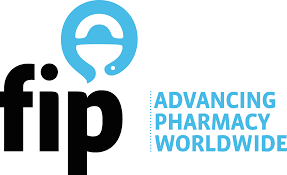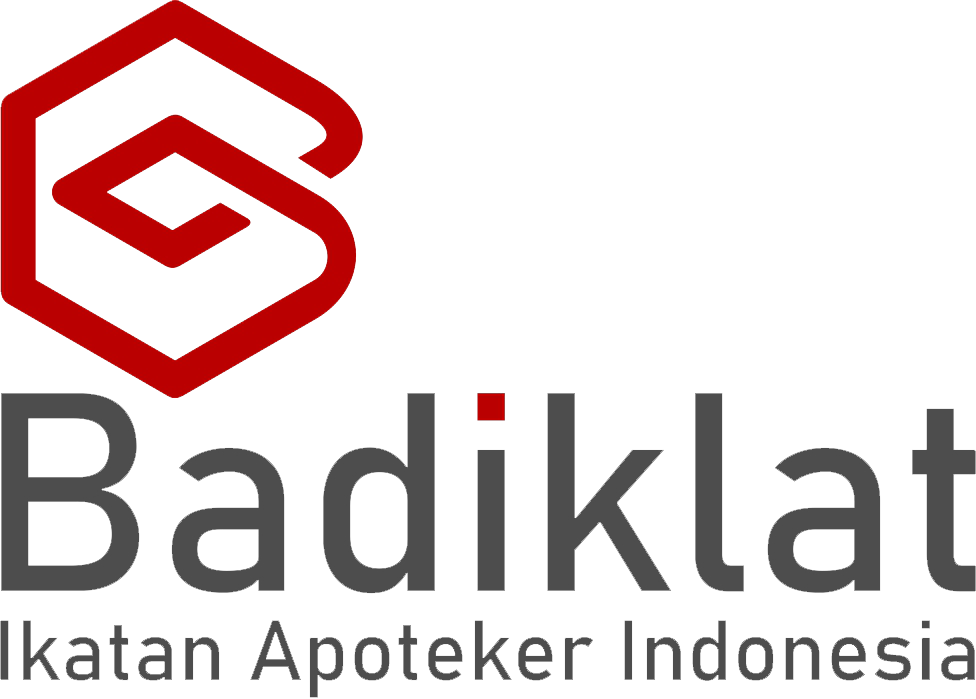(Lauren S. Schlesselman , PharmD*) pharmacytimes
Educational Objectives
Upon completion of this educational activity, participants should be able to:
- Review the role of testosterone in males and the effects of testosterone deficiency.
- Recognize the risk factors associated with hypogonadism.
- Explain treatment goals for hypogonadism.
- Compare the available testosterone replacement therapies.
Type of Activity: Knowledge
Male hypogonadism is characterized by a deficiency in testosterone-a critical hormone for sexual, cognitive, and body function and development. Clinically low testosterone levels can lead to the absence of secondary sex characteristics, infertility, muscle wasting, and other abnormalities. Low testosterone levels may be due to testicular, hypothalamic, or pituitary abnormalities. In individuals who also present with clinical signs and symptoms, clinical guidelines recommend treatment with testosterone replacement therapy.
Role of Testosterone
Throughout the male lifespan, testosterone plays a critical role in sexual, cognitive, and body development. During fetal development, testosterone aids in the determination of sex. The most visible effects of rising testosterone levels begin in the prepubertal stage. During this time, body odor develops, oiliness of the skin and hair increase, acne develops, accelerated growth spurts occur, and pubic, early facial, and axillary hair grows. In men, pubertal effects include enlargement of sebaceous glands, penis enlargement, increased libido, increased frequency of erections, increased muscle mass, deepening of voice, increased height, bone maturations, loss of scalp hair, and growth of facial, chest, leg, and axillary hair. Even as adults, the effects of testosterone are visible as libido, penile erections, aggression, and mental and physical energy.
Pathophysiology of Testosterone and Hypogonadism
The cerebral cortex—the layer of the brain often referred to as gray matter-is the most highly developed portion of the human brain. This portion of the brain, encompassing about two thirds of the brain mass, is responsible for information processing in the brain. It is within this portion of the brain that testosterone production begins. The cerebral cortex signals the hypothalamus to stimulate production of testosterone. To do this, the hypothalamus releases gonadotropin-releasing hormone in a pulsatile fashion, which stimulates the pituitary gland, the portion of the brain responsible for hormones involved in the regulation of growth, thyroid function, blood pressure, and other essential body functions. Once stimulated by gonadotropin-releasing hormone, the pituitary gland produces follicle-stimulating hormone and luteinizing hormone. Once released into the bloodstream, luteinizing hormone triggers activity in the Leydig cells in the testes. In the Leydig cells, cholesterol is converted to testosterone. When testosterone levels are sufficient, the pituitary gland slows the release of luteinizing hormone via a negative feedback mechanism, thereby slowing testosterone production. With such a complex process, many potential problems can lead to low testosterone levels. Any changes in the testicles, hypothalamus, or pituitary gland can result in hypogonadism. Such changes can be congenital or acquired, temporary, or permanent.
In primary hypogonadism, also referred to as primary testicular failure, the source of the problem is linked to the testicles. With primary hypogonadism, testosterone levels are low despite adequate hormonal stimulation from the hypothalamus and pituitary gland. Patients with primary hypogonadism will exhibit normal gonadotropin- releasing hormone, luteinizing hormone, and follicle-stimulating hormone in combination with low testosterone levels.
Klinefelter syndrome—a congenital condition—is the most common cause of primary hypogonadism. This condition results from an abnormality in the X and Y sex chromosomes. Males with this syndrome have 2 or more X chromosomes in addition to 1 Y chromosome, rather than 1 X and 1 Y chromosome. The extra X chromosome(s) result in abnormal testicular development and underproduction of testosterone.
Recent studies have found that testosterone production slowly decreases as a result of aging, although the rate of decline varies. Unlike women who experience a rapid decline in hormone levels during menopause, men experience a slow, continuous decline over time. The Baltimore Longitudinal Study of Aging reported that approximately 20% of men in their 60s and 50% of men in their 80s are hypogonadal.1 The New Mexico Aging Process Study showed a decrease in serum testosterone of 110 ng/dL every 10 years.2 Because hormone levels decline slowly, this type of hypogonadism is sometimes referred to as partial androgen deficiency of the aging male (PADAM). With the growing elderly population, the incidence of PADAM may increase over the next few decades.
In contrast to primary hypogonadism, secondary hypogonadism indicates a problem in the hypothalamus or the pituitary gland, rather than in the testicles. Secondary hypogonadism is characterized by low levels of folliclestimulating hormone, luteinizing hormone, and testosterone.
Regardless of age or comorbid conditions, obesity is associated with hypogonadism. The Baltimore Longitudinal Study of Aging found that testosterone decreased by 10 ng/dL per 1-kg/m2 increase in body mass index.1 Another study also showed reduced testosterone levels in men with increased total abdominal adiposity.3 Proposed causes for the effects of obesity on testosterone level include increased clearance or aromatization of testosterone in adipose tissue and increased formation of inflammatory cytokines, which hinder secretion of gonadotropin-releasing hormone.4 Similar to the projections for an aging population, the increasing incidence of obesity may lead to an increased incidence of secondary hypogonadism.
When the risk factors of obesity and age are removed, diabetes mellitus still remains an independent risk factor for hypogonadism. Although diabetes mellitus–related hypogonadism was previously thought to be associated with testicular failure, study results show one third of diabetic men had low testosterone levels but also had low pituitary hormone levels.5 Population projections expect the number of cases of diabetes mellitus to rise from 171 million in 2000 to 366 million in 2030.6 This drastic increase in cases will impact the prevalence of hypogonadism as well.
Certain medications are shown to reduce testosterone production. Among the medications known to alter the hypothalamic-pituitary-gonadal axis are spironolactone, corticosteroids, ketoconazole, ethanol, anticonvulsants, immunosuppressants, opiates, psychotropic medications, and hormones.
Symptoms
Hypogonadism is characteristed by serum testosterone levels <300 ng/dL in combination with at least one clinical sign or symptom. Signs of hypogonadism include absence or regression of secondary sex characteristics, anemia, muscle wasting, reduced bone mass or bone mineral density, oligospermia, and abdominal adiposity. Symptoms of postpubescent hypogonadism include sexual dysfunction (erectile dysfunction, reduced libido, diminished penile sensation, difficulty attaining orgasm, and reduced ejaculate), reduced energy and stamina, depressed mood, increased irritability, difficulty concentrating, changes in cholesterol levels, anemia, osteoporosis, and hot flushes. In the prepubertal male, if treatment is not initiated, signs and symptoms include sparse body hair and delayed epiphyseal closure.
Testing
Early diagnosis and treatment can reduce risks associated with hypogonadism. Early detection in young boys can help to prevent problems due to delayed puberty. Early diagnosis in men helps protect against the development of osteoporosis and other conditions. The diagnosis of hypogonadism is based on symptoms and bloodwork, in particular on testosterone levels. Often the first step toward diagnosis is the Androgen Deficiency in Aging Male (ADAM) test—a 10-item questionnaire intended to identify men who exhibit signs of low testosterone.
Testosterone levels vary throughout the day and are generally highest in the morning, so blood levels are typically drawn early in the morning. If low testosterone levels are confirmed, further testing is done to identify if the cause is testicular, hypothalamic, or pituitary. These tests may include hormone testing, semen analysis, pituitary imaging, testicular biopsy, and genetic studies. Once treatment starts, the patient may continue to have testosterone levels drawn to determine if the medication is helping to produce adequate testosterone levels.
Treatment Options
Testosterone replacement therapy is the primary treatment option for hypogonadism. Ideally, therapy should provide physiologic testosterone levels, typically in the range of 300 to 800 ng/dL. According to guidelines from the American Association of Clinical Endocrinologists,7 updated in 2002, the goals of therapy are to (1) restore sexual function, libido, well-being, and behavior; (2) produce and maintain virilization; (3) optimize bone density and prevent osteoporosis; (4) in elderly men, possibly normalize growth hormone levels; (5) potentially affect the risk of cardiovascular disease; and (6) in cases of hypogonadotropic hypogonadism, restore fertility.7
To achieve these goals, several testosterone delivery systems are currently available in the United States. Clinical guidelines published in 2006 by the Endocrine Society8 recommend reserving treatment for those patients with clinical symptoms, rather than just low testosterone levels.
Transdermal patch
Transdermal testosterone patches are available in the United States under the brand name Androderm. Although no longer available in the United States, scrotal patches remain available in other parts of the world. Transdermal patches deliver continuous levels of testosterone over a 24-hour period. Application site reactions account for the majority of adverse effects associated with transdermal patches, with elderly men proving particularly prone to skin irritation. Local reactions include pruritus, blistering under the patch, erythema, vesicle formation, induration, and allergic contact dermatitis. Approximately 10% of patients discontinue patch therapy due to skin reactions.9 In one study, 60% of subjects discontinued the patch between weeks 4 and 8 due to skin irritation.10 A small percentage of patients may also experience headache, depression, and gastrointestinal (GI) bleeding. Some patients report that the patch easily falls off and is difficult to remove from the package without good dexterity. Transdermal patches are more expensive than injections, but convenience of use and maintenance of normal diurnal testosterone levels are advantageous. Some patients report that the patch is noisy and therefore they feel stigmatized by its presence.
Topical gel
Currently, 2 topical testosterone gels—Androgel and Testim—are available in the United States. Application in the morning allows for testosterone concentrations that follow the normal circadian pattern. Topical testosterone gels also provide longer-lasting elevations in serum testosterone, compared with transdermal patches.11 Similar to patches, testosterone delivered via gels does not undergo first-pass metabolism. Adverse effects associated with therapy include headache, hot flushes, insomnia, increased blood pressure, acne, emotional lability, and nervousness. Although application site reactions occur, skin irritation is approximately 10 times less frequent with gels than with transdermal patches.12 Advantages associated with topical gel include maintenance of normal diurnal testosterone levels and documented increases in bone density.13 Potential problems associated with the gel are the potential for transfer of the gel from person to person and the cost.
Buccal tablets
Buccal testosterone tablets, marketed as Striant, release testosterone in a pulsatile manner, similar to endogenous secretion. With this route, peak testosterone levels are rapidly achieved and steady state is reached by the second dose following twice-daily dosing. Similar to gel and transdermal products, buccal administration avoids first-pass metabolism. Food and beverage do not alter drug absorption. Although well-tolerated, transient gum irritation and bitter taste are the chief adverse effects associated with this route. Gum irritation tends to resolve within the first week. Other adverse effects include dry mouth, toothache, and stomatitis. Some patients find the buccal tablet uncomfortable and report concern about the tablet shifting in the mouth while talking.
Implantable pellet
Testosterone has also been formulated into an implantable pellet, marketed as Testopel. This surgically implanted pellet slowly releases testosterone via zero-order kinetics over many months (up to 6 months), although peak testosterone levels are achieved within 30 minutes. The chief complaints associated with this formulation are pellet extrusion, minor bleeding, and fibrosis at the site.
Intramuscular injections
Intramuscular formulations are also available, sold as Depo-Testosterone (testosterone cypionate) and Delatestryl (testosterone enanthate). The testosterone is suspended in oil to prolong absorption. Peak levels occur within 72 hours of administration, but intramuscular administration is associated with the most variable pharmacokinetics of all the formulations. In the first few days after administration, supraphysiologic testosterone levels are achieved, followed by subphysiologic levels near the end of the dosing interval. Such fluctuations, often associated with wide variations in mood, energy, and sexual function, prove distressing to many patients. To reduce fluctuations, lower doses and shorter dosing intervals (2 weeks) are often used.
Injection site reactions are also common, but are rarely the reason for discontinuation of therapy. Despite the fluctuations in testosterone levels, intramuscular injections provide a cost-effective option and the convenience of 2- to 4-week dosing intervals. Disadvantages associated with injections include visits to the doctor's office visits for dose administration and lack of physiologic testosterone patterns.
Oral tablets
Although not currently available in the United States, oral testosterone tablets, under the brand name Andriol, are available in other countries. In the United States, Android and Testroid—both methyltestosterone products—are FDA-approved oral formulations. Although relatively inexpensive, oral products undergo extensive first-pass metabolism and therefore require multiple daily doses. Oral products are associated with elevated liver enzymes, GI intolerance, acne, and gynecomastia. Regardless of treatment option, patients should be aware of risks associated with testosterone therapy, including:
- Worsening of the prostatic hypertrophy
- Increased risk of prostate cancer
- Lower sperm count with large doses
- Swelling of ankles, feet, or body, with or without heart failure
- Gynecomastia
- Sleep apnea
- Blood clots
Patients should be educated on the signs and symptoms of these adverse effects and instructed to notify their doctor if any of these occur.
Conclusion
Hypogonadism affects men of all ages, either through congenital or acquired causes. For patients who have clinical symptoms associated with their low testosterone levels, treatment is essential to the prevention of sexual, cognitive, and bodily changes. A variety of treatment options are available utilizing different dosage formulations, providing patients with choices that best meet their needs.
References:
- Harman SM, Metter EJ, Tobin JD, Pearson J, Blackman MR. Longitudinal effects of aging on serum total and free testosterone levels in healthy men. Baltimore Longitudinal Study of Aging. J Clin Endocrinol Metab. 2001;86(2):724-731.
- Morley JE, Kaiser FE, Perry III HM, et al. Longitudinal changes in testosterone, luteinizing hormone, and follicle-stimulating hormone in healthy older men. Metabolism. 1997;46(4):410-413.
- Haffner SM, Valdez RA, Stern MP, Katz MS. Obesity, body fat distribution and sex hormones in men. Int J Obes Relat Metab Disord. 1993;17(11):643-649.
- Zumoff B, Strain GW, Miller LK, et al. Plasma free and non-sex-hormone-binding globulin-bound testosterone are decreased in obese men in proportion to their degree of obesity. J Clin Endocrinol Metab. 1990;71(4):929-931.
- Dhindsa S, Prabhaker S, Sethi M, Bandyopadhyay A, Chaudhari A, Dandona P. Frequent occurrence of hypogonadotropic hypogonadism in type 2 diabetes. J Clin Endocrinol Metab. 2004;89(11):5462-5468.
- Wild S, Roglic G, Green A, Sicree R, King H. Global prevalence of diabetes: estimates for the year 2000 and projections for 2030. Diabetes Care. 2004;27(5):1047-1053.
- AACE Hypogonadism Task Force. Medical guidelines for clinical practice for the evaluation and treatment of hypogonadism in adult male patients – 2002 updated. Endocrine Practice. 2002;8(6):434-456.
- Bhasin S, Cunningham GR, Hayes FJ, et al. Testosterone therapy in adult men with androgen deficiency syndromes: an endocrine society clinical practice guideline. J Clin Endocrinol Metab. 2006;91(6):1995-2010.
- Jordan JR WP. Allergy and topical irritation associated with transdermal testosterone administration: a comparison of scrotal and nonscrotal transdermal systems. Am J Contact Dermatol. 1997;8(2):108-113.
- Parker S, Armitage M. Experience with transdermal testosterone replacement therapy for hypogonadal men. Clin Endocrinol (Oxf). 1999;50(1):57-62.
- Swerdloff RS, Wang C, Cunningham G, et al. Long-term pharmacokinetics of transdermal testosterone gal in hypogonadal men. J Clin Endocrinol Metab. 2000;85(12):4500-4510.
- Wang C, Swedloff RS, Iranmanesh A, et al, Testosterone Gel Study Group. Transdermal testosterone gel improves sexual function, mood, muscle strength, and body composition parameters in hypgonadal men. J Clin Endocrinol Metab. 2000;85(8):2839-2853.
- Wang C, Swerdloff RS, Iranmanesh A, et al. Effects of transdermal testosterone gel on bone turnover makers and bone mineral density in hypogonadal men. Clin Endocrinol (Oxf). 2001;54(6):739-750.
*)Lauren S. Schlesselman, PharmD, is Assistant Clinical Professor at the University of Connecticut School of Pharmacy. Dr.Schlesselman has no relevant affiliations or financial relationships to disclose.





